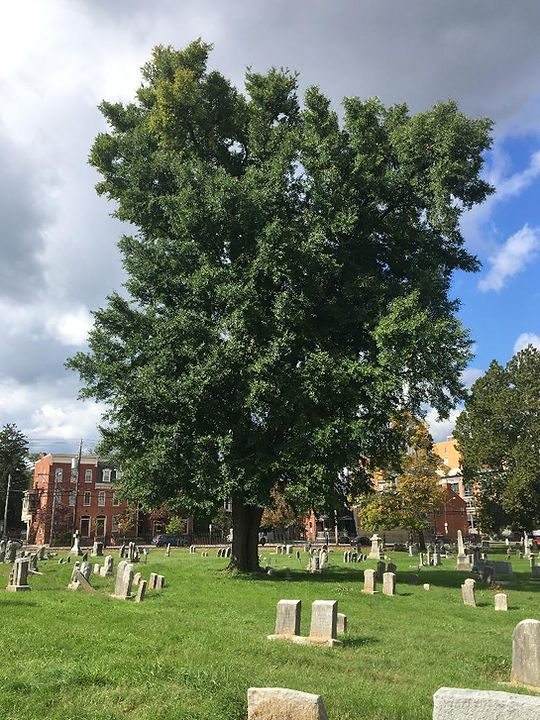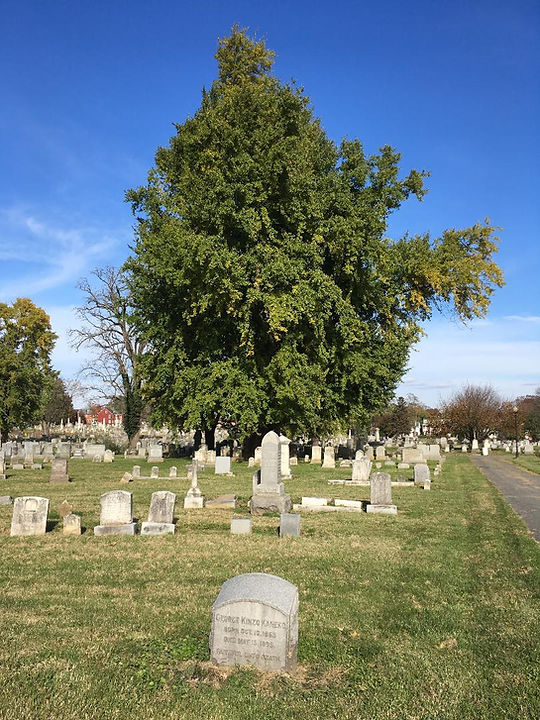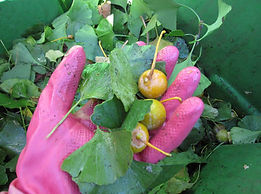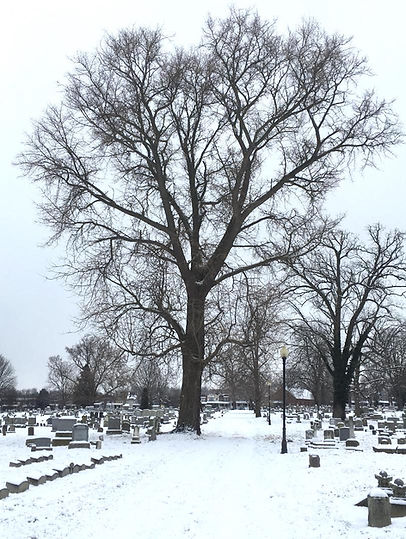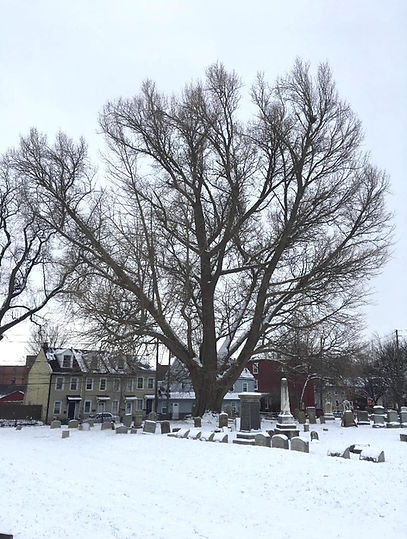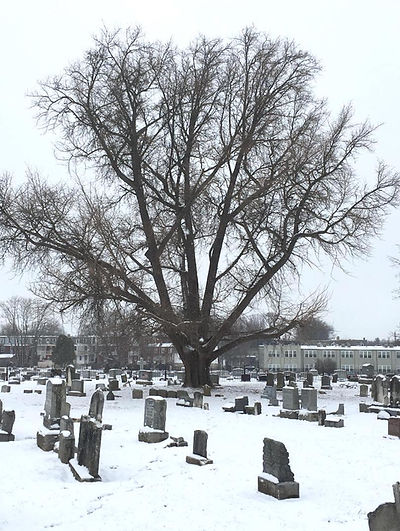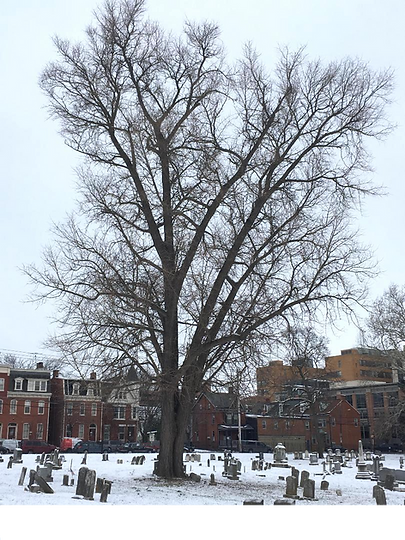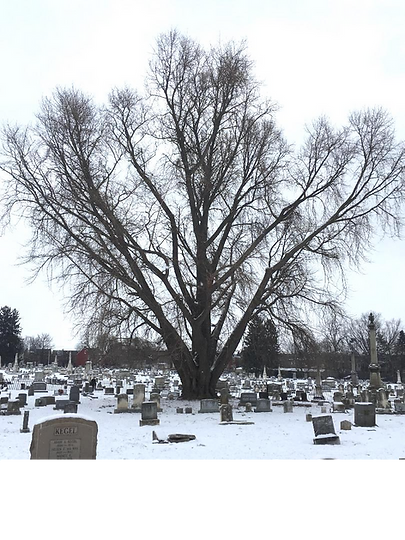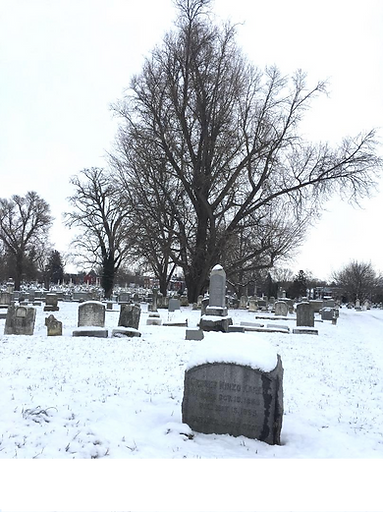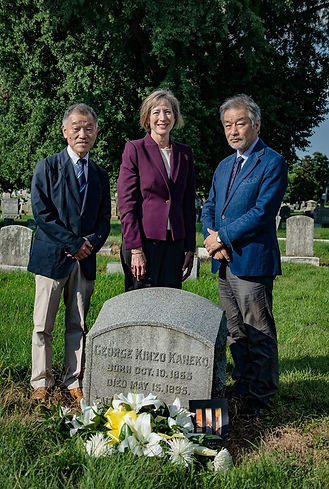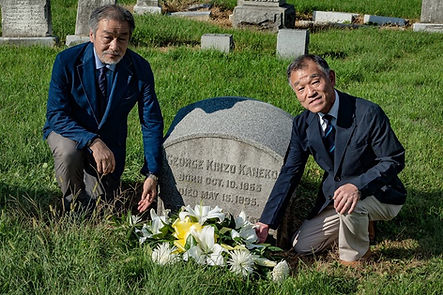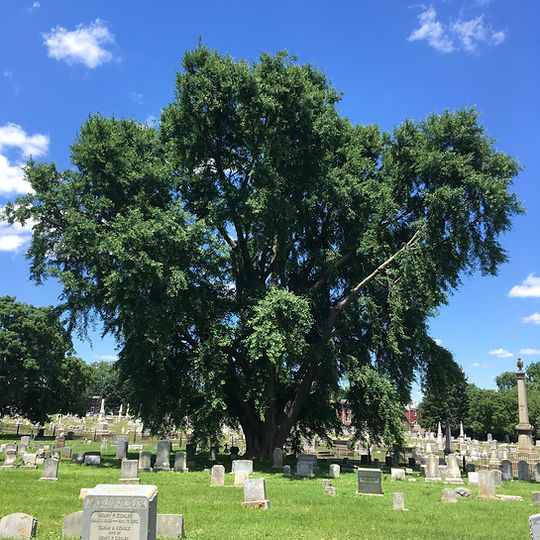
Six outstanding ginkgo trees, identical in age (about 130 years) but not size, live in Lancaster Cemetery. The background of these trees, as related by Jerry Smoker, longtime president of the cemetery’s board of trustees:
“George Kinzo Kaneko was an F&M exchange student from Japan but died suddenly in 1895 at the age of 29. Upon his death, the government of Japan sent six ginkgo trees in his honor. Three females went to F&M and three males were delivered to the cemetery. Later as the females started to mature and produce fruit, there were complaints about the putrid smell of the fruit. Many called for the trees to be cut down. Fearing an international incident, F&M decided that the females should be relocated to Lancaster Cemetery.” These female trees today are about half the size of the males.
More details: Mr. Kaneko, whose well-to-do family belonged to Japan’s Samurai class, came to America in 1884 to learn English, and eventually studied at both F&M (1887-1891) and Lancaster Theological Seminary (1891-1894). He later taught Japanese at F&M and was a licensed preacher as well. Unfortunately, Mr. Kaneko developed pulmonary disease (tuberculosis) and died at St. Joseph’s Hospital on May 15, 1895. His obituary noted that Mr. Kaneko “was the very soul of honor, the perfection of politeness, and generous to a fault.”
One of the male trees is tied (co-champion) for being the largest ginkgo in the entire state of Pennsylvania. [See separate entry.]
Although smaller than the male ginkgos, the cemetery’s females are still large trees and offer a bountiful crop of nuts each year. Female ginkgos have been removed from many American streets because of their malodorous fruit, but inside the inedible pulp is a kernel that is sweet, nutritious, and possibly medicinal. [The medicinal value of ginkgo leaf extract, which is extremely high in antioxidants, is more certain.] Indeed, each Autumn some of Lancaster’s Chinese and other Asian families visit the cemetery to gather ginkgo nuts. The harvesters must wear gloves because the fruit contains urushiol (like poison ivy and poison oak). In addition, the nuts themselves contain a mild toxin that is unaffected by cooking and so should only be consumed in small amounts (10 nuts/ day for adults, 5 nuts/day for children).
[Last two photos: (1) Lancaster Seminary president Dr. Carol Lytch, Professor Michitaka Suzuki (L), and Mr. Satoshi Hino (R) from Tohoku Gakuin University, as (2) the Japanese visitors “laid graveside floral tribute” to Mr. Kaneko.]
